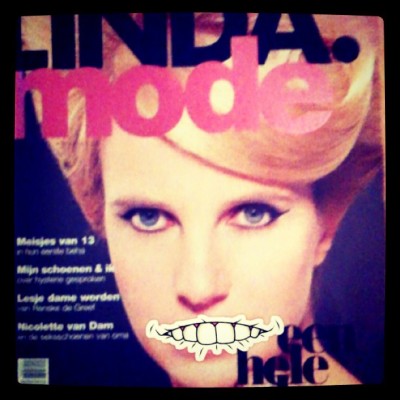App Review: Stiktu (Beta)
…is a new (not yet released) augmented reality app for Android and iPhone by the makers of Layar. It enables users to attach (‘stick’) texts and images to ‘real-life’ objects, whether it is a book, a pack of cigarettes, or a thing specific to a certain location, like the national monument on the Dam in Amsterdam. Using your mobile device’s camera it ‘scans’ an image, which it analyses and compares to other images added by other uses (the social version of Google Goggles, if you will). If you point your camera at the object or scene it will augment it with the digital traces that you and other people left behind. It will also notify you when you are the first to augment a certain object. (I was the first to ‘stiktu’ the Apple Logo ;)
Here’s a short how-to:
Once you’re done, you become part of the group of owners of an instance of that object, and can see what they stuck to it.
For those of you familiar with Layar, there are two main differences. First, it is not exclusively location-based, which can be somewhat of a limited data-set in cases where location isn’t essential. It creates a community based not on geographical proximity but based on shared objects. This is definitely an interesting move. In our day to day activities, we are dealing mostly with lookalike objects (a.k.a. products) which (according to the advertising guru’s) tell a lot about our way of ‘being in the world’ and ‘being together’. However, this focus on the ‘form’ or ‘appearance of objects creates somewhat of a ‘philosophical’ problem. Because it is mostly not about this particular object, here and now, (except for the monument example, which is location-based), the reason why any app would interrelate people by particular here-and-now objects, instead of semantic criteria (as in: Google Search, or specific product forums: the query “Lucky Strike” is ‘about all’ instances of Lucky Strike packs of cigarettes) becomes unclear. Second, whereas in Layar the augmented data comes from third-party data sets or user generated content sites like YouTube, In Stiktu all the data is generated by the ‘community’ (a.k.a. aggregate) of Stiktu users, which adds to the personal character of the comments encountered. There are three main menu options: “Scan”, “My” and “Nearby”. Pretty self-explanatory, right? Furthermore, you can view a feed of objects you liked, as well as a collection of your own augmented objects.
 Needless to say, since the content is created exclusively by Stiktu users, it becomes interesting only once there is a large and active user-base. It’s not cool to wander in the Augmented Reality on your own. As this is not yet the case, I can only anticipate or envision the value of this application. The option to integrate third-party content seems like a way to go anyway, I think, as it needs a huge data- and user-base which it cannot generate on its own (probably). Furthermore, usage is limited by constant crashes (arrghh!). It’s also still very slow, unresponsive and the process of uploading tedious. But, being a beta, alas, they’re working on it.
Needless to say, since the content is created exclusively by Stiktu users, it becomes interesting only once there is a large and active user-base. It’s not cool to wander in the Augmented Reality on your own. As this is not yet the case, I can only anticipate or envision the value of this application. The option to integrate third-party content seems like a way to go anyway, I think, as it needs a huge data- and user-base which it cannot generate on its own (probably). Furthermore, usage is limited by constant crashes (arrghh!). It’s also still very slow, unresponsive and the process of uploading tedious. But, being a beta, alas, they’re working on it.
All in all, it could be a nice tool for adding “user-generated information contexts” to real-life things which reveal a certain shared interest, like adding reviews to music records, or sticking a middle finger to the Ministry of Education, Culture and Science. In the coming years I think it’s safe to say that there will be an increasing focus on augmented reality applications, as image recognition techniques and mobile devices are becoming better and more pervasive. Maybe this will last longer than virtual reality, although I highly doubt that Stiktu is the app that will revolutionize the way we approach and deal with everyday objects.

Other Introductions to Stiktu:
